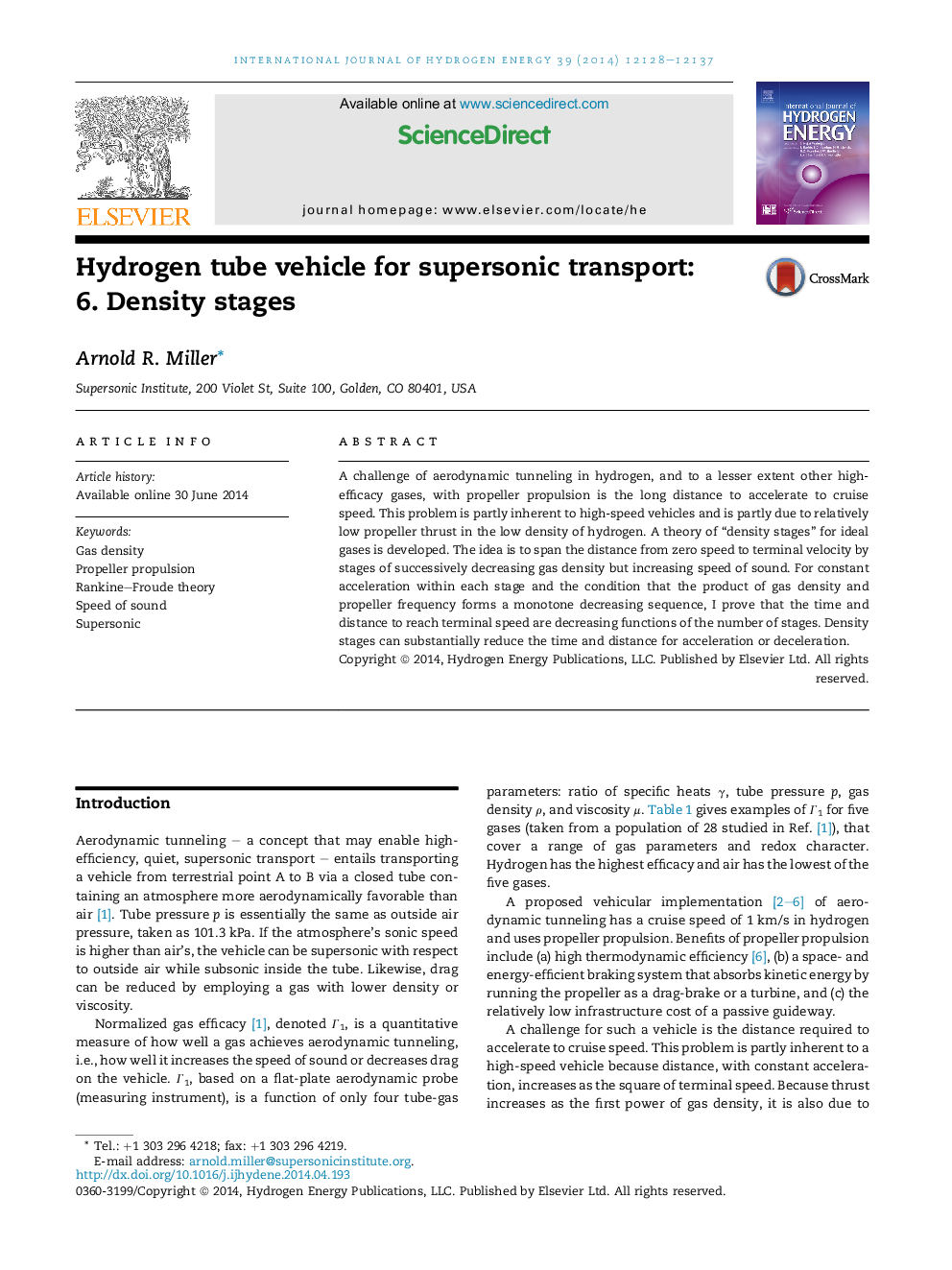| Article ID | Journal | Published Year | Pages | File Type |
|---|---|---|---|---|
| 1273012 | International Journal of Hydrogen Energy | 2014 | 10 Pages |
•A challenge of the supersonic hydrogen tube vehicle is long acceleration distance.•Density stages reduce the distance to accelerate a tube vehicle by many kilometers.•Density stages use progressively decreasing density but increasing sonic speed.•Stages are separated by equivalent of mechanical irises that open to allow transit.•It is proved that distance is minimized when the number of stages is maximized.
A challenge of aerodynamic tunneling in hydrogen, and to a lesser extent other high-efficacy gases, with propeller propulsion is the long distance to accelerate to cruise speed. This problem is partly inherent to high-speed vehicles and is partly due to relatively low propeller thrust in the low density of hydrogen. A theory of “density stages” for ideal gases is developed. The idea is to span the distance from zero speed to terminal velocity by stages of successively decreasing gas density but increasing speed of sound. For constant acceleration within each stage and the condition that the product of gas density and propeller frequency forms a monotone decreasing sequence, I prove that the time and distance to reach terminal speed are decreasing functions of the number of stages. Density stages can substantially reduce the time and distance for acceleration or deceleration.
